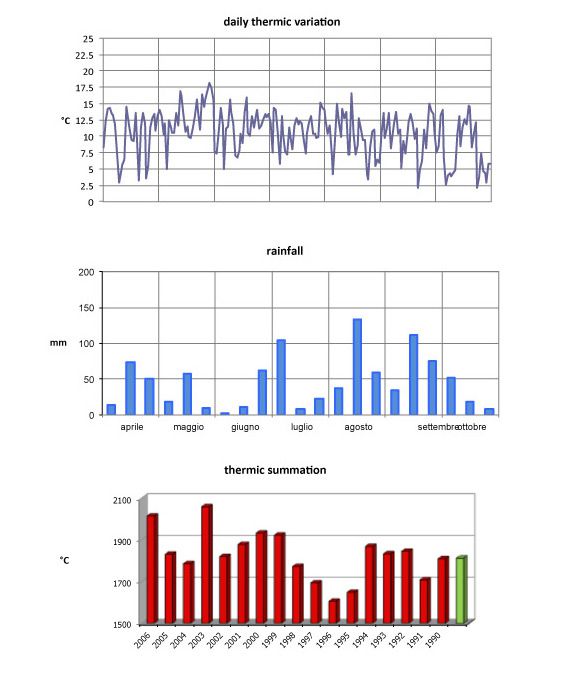VINTAGES
VINTAGE 2005
2005 GROWING YEAR
Heat and lack of rain at the start, then cold and abundant rain at the finish had a significant influence on this season’s growth stages.
The 2005 growing year witnessed the predominance of a continental-style climate over the Mediterranean pattern, with a consequent slowing down of the vine growth cycle as well as a more gradual ripening curve of the fruit.
The overall picture of the season must begin with the initial budding, which was slightly delayed by fairly unfavourable temperatures in March, even though bleeding took place earlier than usual.
Mild temperatures in May brought flowering in the first week in June, and growth then proceeded rapidly and smoothly, assisted by an absence of rain. Flowering was quite normal, taking place uniformly, and fruit set was satisfactory, with a excessive number of berries or overly-compact clusters.
This regular weather lasted through July. Its final week brought the traditional dry period, with intense heat and high levels of evapotranspiration.
Beginning on August 3, frequent rains lowered temperatures by 7-8oC, which held fairly steady through the end of the month. The cool, moist weather brought a resurgence of vegetative activity in the vine, thus delaying veraison, which took place only in the first week of August. These conditions made even more crucial the vineyard management practices that we use in most seasons, such as leaf removal from the base of shoots and cluster thinning. Such procedures, always carried out by hand, ensured, this year, an improved microclimate in the fruiting zone, with increased direct insolation of the clusters and their correct positioning on the vine in relation to the canopy.
In September, temperatures kept to the seasonal average, with some heavy rainstorms; these, however, caused no water build-up problems, since our rocky soils drain well.
Ripening took place somewhat slowly, and, as usual, the consequence was a high level of aromatic components as well as excellent levels of acidity.
The first varieties were brought in beginning in the third decade of September, and we immediately noticed lower crop levels than we had calculated earlier in the summer.
Weather and vine growth patterns in this vintage remind us of those in 1995 and 1996, years whose wines evolved very slowly and over many years of cellaring revealed impressive levels of minerality and complexity.

